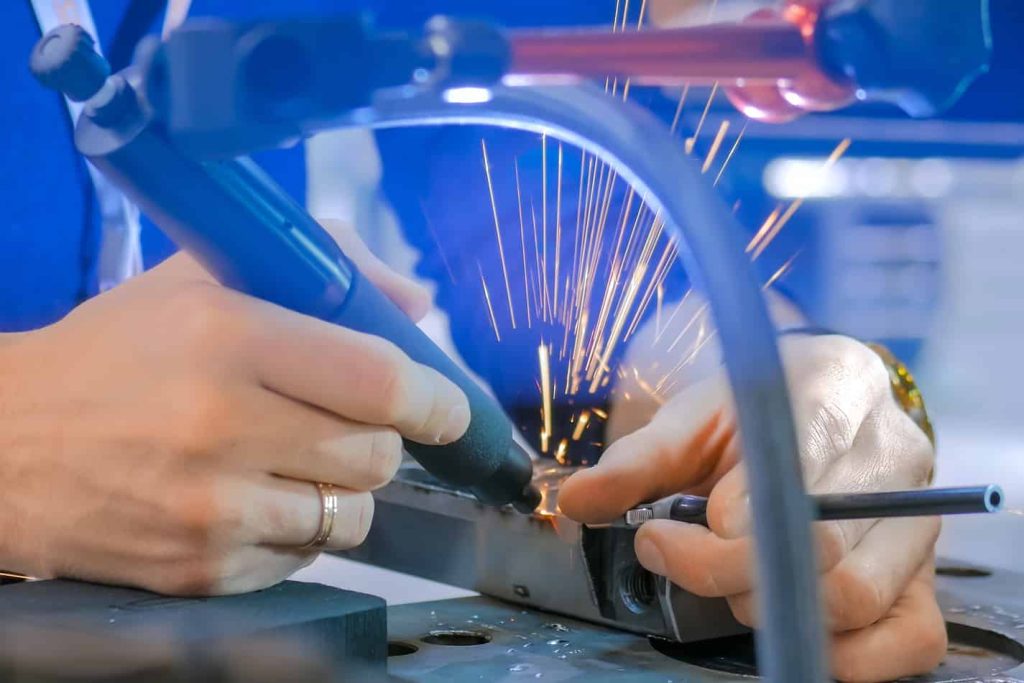The resistance of the material to electricity is used in the process of spot welding, which brings together two thin work pieces. The term comes from the fact that it is a sort of resistance welding that only includes a tiny place rather than a broad region throughout the process. There are three factors that influence the strength of the weld: the pressure, the temperature, and the materials of the work piece. Companies that produce spot welding machines have the responsibility of coming up with a variety of designs in order to make this method accessible for the majority of industrial applications.
Despite the fact that the use of this method is more effective than others, it does have certain restrictions. Take, for example, the need that the work pieces be electrically conductive in order for the electrode to be able to generate a current through the material. To put it another way, this method does not function well with materials that are not conductive. Now, let’s take a more in-depth look at the equipment that are used for spot welding.
One of the most important welding techniques, spot welding is used in a broad variety of industrial applications. In this form of resistance welding procedure, two or more pieces of metal are joined together by applying heat and pressure at precise spots. This type of welding is also known as spot welding. Because it produces a connection that is both strong and long-lasting, this procedure is a vital technique in a variety of industries, including the automotive, aerospace, construction, and industrial sectors. With regard to spot welding, it is very necessary to possess the appropriate machinery and equipment in order to get the best possible outcomes. There are many different kinds of spot welding machines available from spot welding machine manufacturers on the market, each of which is intended to meet the specific requirements of a certain industrial sector. Let’s take a look at some of the more prevalent kinds that are present:
- Spot Welders Employing Resistance:
When it comes to spot welding applications, the equipment that are used the most often are resistance spot welders. When an electric current is sent through the metal parts that are going to be linked, they produce resistance and heat at the spots where the metal pieces come into contact with one another. Because of this heat, the metals melt and fuse together, which results in the formation of a strong weld. There are a variety of sizes and capacities available for resistance spot welders, which allows them to fit a wide range of work piece thicknesses and kinds of materials.
- Spot welders that use capacitor discharge (CD) technology:
CD spot welders make use of the electrical energy that is stored in capacitors in order to provide a current discharge of a high intensity for the purpose of welding. Due to the fact that they provide precise control and reduce the likelihood of distortion or damage, these machines are especially well-suited for materials that are fragile or thin. Some of the industries that make use of CD spot welders are the electronics industry, the automobile industry, and the jewelry production industry.
- Welders that use projection
In order to connect metal components that have certain projections or embossed characteristics, projection welders are specifically developed for the task. These machines are equipped with specific electrodes that apply pressure and heat to the elevated regions, so helping to ensure that the weld is both strong and uniform. In the automobile industry, projection welders are often used.
Bottom Line
It is necessary for industrial experts who deal with metal fabrication and welding operations to have a solid understanding of the art of spot welding. By adhering to the detailed instructions, gaining a grasp of the fundamental processes, and taking the necessary precautions, you will be well on your way to being an expert in spot welding. Significant technical improvements have resulted in the development of spot welding equipment throughout the course of their history. At the beginning, spot welders were massive, stationary equipment that were either manually operated or controlled by simple timers.



